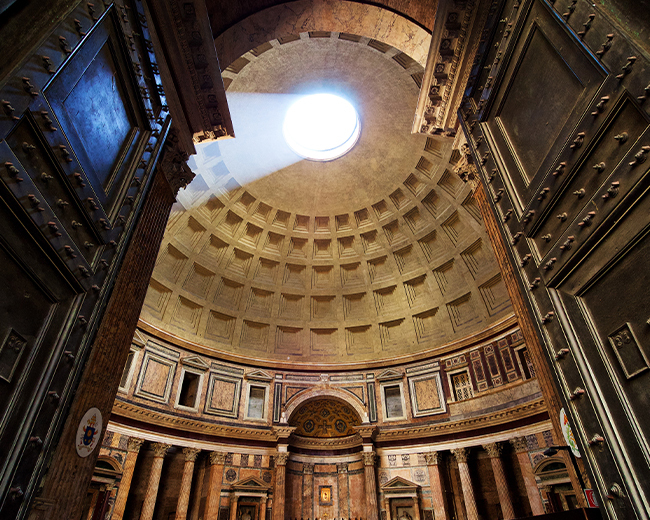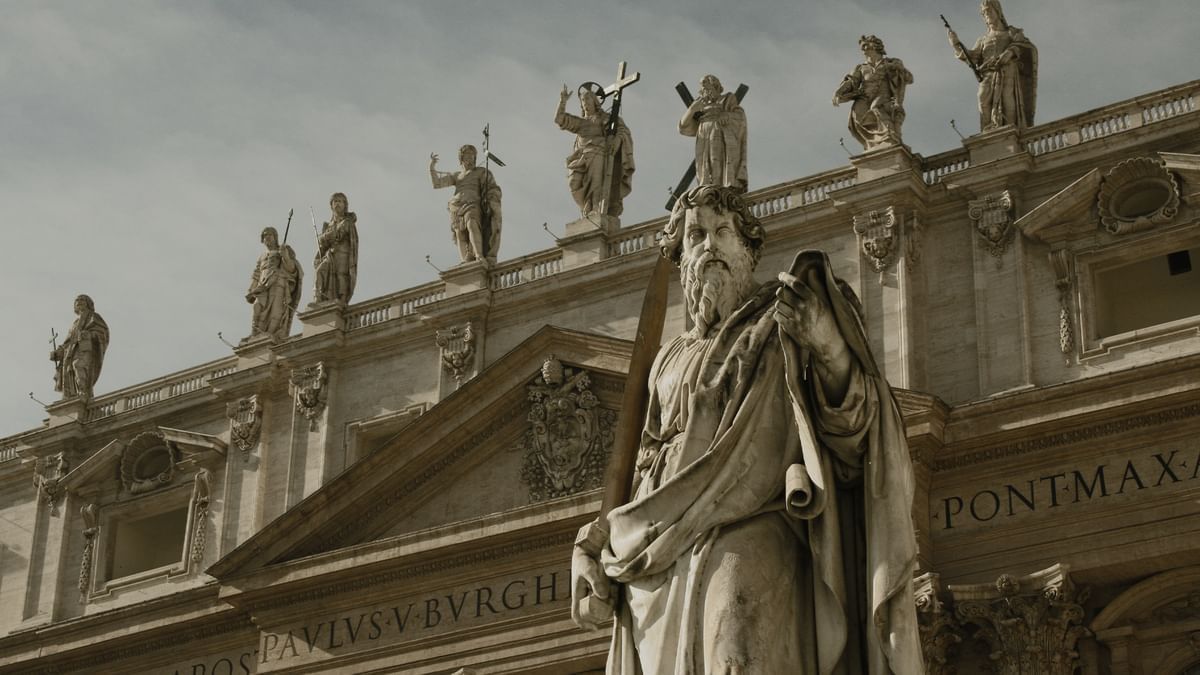Ancient events, backstories, pagan traditions and illusions… The Eternal City never ceases to amaze
25 Jan 2021
Gruppo UNA
Check out our selection of fun facts you may not know about Rome to liven up your exploration of one of the world’s top destinations. These legends and stories will help you look at sites in a new light compared to other tourists.
The Pantheon bathed in light
Did you know that the best time to visit the Pantheon is on or around 21 April? That’s the day that the foundation of Rome is celebrated, and on which the sun, perfectly vertical at noon, illuminates the oculus of the Pantheon dome with its rays. In Roman times, Emperors chose this date to make their triumphal entrance into the building, seemingly invited by Apollo himself, the Ancient Romans’ Sun God.

The Trevi Fountain and what happens to those coins
The Trevi Fountain is without doubt one of Rome’s best-known and most romantic monuments. We all know the tradition: throw a coin into the fountain, keeping your eyes closed and with your right hand on your left shoulder, and you will be guaranteed to return to Rome, or at the very least, be able to make a wish. One thing not everyone knows is that this famous act also helps people in need. For many years now, the Rome town council has donated all of the money it collects from the fountain, more than a million euros a year, to Caritas to use in charitable works.

Nero’s Tomb and pagan legends
We know Nero as a powerful tyrant who ruled the Roman Empire. After being declared a public enemy, he was ultimately forced to flee the city. He only got as far as what today is known as Piazza del Popolo, where he committed suicide and was buried beneath a walnut tree. For centuries, witches and sorcerers gathered on this site to perform black magic ceremonies. Legend has it that black crows – evil spirits intent on torturing Nero’s soul – surrounded the walnut tree. In the twelfth century, Pope Paschal II decided to put an end to these pagan ceremonies. To break the spell, he had the walnut tree chopped down, exhumed the Emperor’s remains, had them and the cut tree burned, and threw the ashes into the Tiber. In its place, he commissioned a chapel consecrated to the Virgin. In 1472, that chapel was upgraded to the Basilica of Santa Maria del Popolo, which we see on the site today.

Rome’s oldest bridge
Pons Fabricius is the oldest bridge in the capital, in the same place and form as it has been for more than two thousand years now. Unlike Ponte Milvio or Ponte Sublicio – which were made of wood and therefore later rebuilt – Ponte Fabricio has always remained the same. A legend became associated with this bridge regarding arguments among the four architects Pope Sixtus V commissioned for its restoration. As soon as the work was completed, the Pope had them beheaded, and made a monument with four heads carved into a single block of marble. Today, the bridge is commonly known as the Four Heads Bridge.

St. Ignatius Church: a true dome or an optical illusion?
The church of St. Ignatius of Loyola is in the heart of old Rome, a stone’s throw from Via del Corso. If you look up at the ceiling from a point marked out on the floor not far from the altar, you’ll see a dome that doesn’t actually exist! It is in fact a trompe l’oeil painting that reproduces the image of a dome. Legend has it that the planned dome was never built because the local residents didn’t want this massive feature to block out their sunlight.

Where to stay in Rome
Rome may be full of hidden secrets and ancient legends, but when it comes to where to stay in Rome, it’s as clear as the light of day: Gruppo UNA has you covered. In the heart of the Eternal City, UNAHOTELS Decò Roma boasts a fabulous location. Enjoy the inimitable Italian-style welcome of its striking architectural design and art deco interiors.



